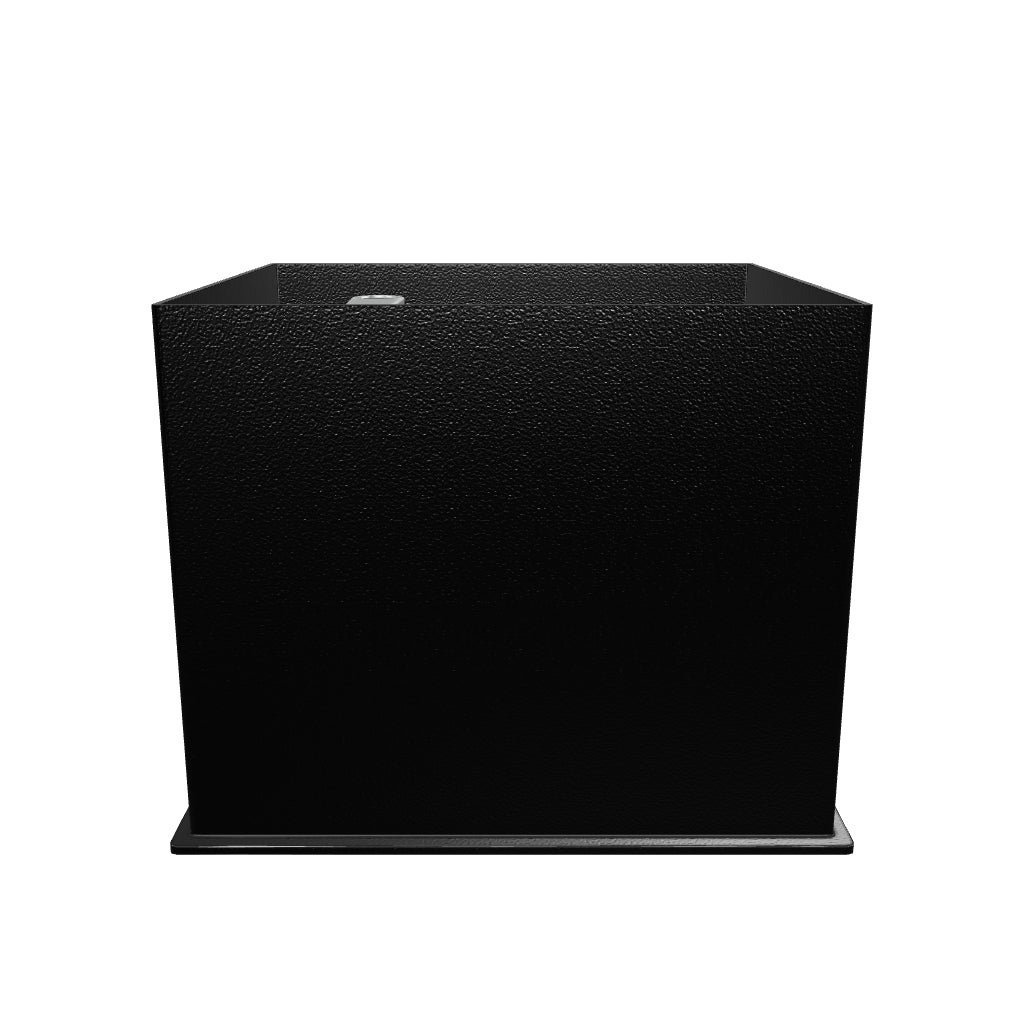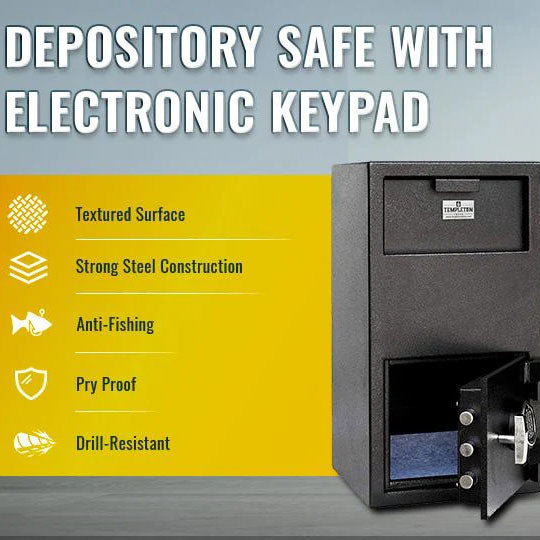Pharmacy Security: How to Safeguard Medications in Walk-in Clinics
Walk-in clinics are a cornerstone of accessible healthcare, offering fast, reliable service to patients who need prescriptions filled and minor ailments treated. But with that convenience comes a big responsibility—pharmacy security. Whether you're managing a small urgent care center or a full-service walk-in clinic, safeguarding medications and patient data is non-negotiable.
In this guide, we’ll cover everything you need to know about improving pharmacy security in walk-in clinics—from physical safes to workflow protocols, compliance with laws, and even staff training tips.
Why Pharmacy Security Matters More Than Ever
Rising Risk of Drug Theft and Diversion
Prescription drugs—especially opioids, ADHD medications, and benzodiazepines—are prime targets for theft. Clinics without strong pharmacy security protocols can become easy marks for internal diversion or break-ins. A breach in security isn’t just a financial risk—it can endanger lives and damage your clinic’s reputation.
Protecting Patient Trust and Compliance
Beyond theft, protecting patient health information (PHI) and medication inventory is required under HIPAA and DEA regulations. A lapse in pharmacy security can result in fines, lawsuits, and loss of licensing. That’s why even small clinics must take proactive steps to create a secure, compliant pharmacy space.
Building Blocks of Pharmacy Security in Walk-in Clinics
Let's break it down by category: physical security, digital protection, operational procedures, and staff accountability.
1. Physical Security: Lock Up Your Meds
Invest in a High-Security Safe
One of the best defenses against theft is a pharmacy-grade security safe. Not all safes are created equal—look for models that offer:
- Fire resistance
- Heavy-duty steel construction
- Anti-pry doors
- Digital or biometric locks
- UL or TL-15/30 security ratings
These safes can store controlled substances, narcotics, and high-value medications in compliance with DEA regulations.
✅ Pro Tip: Consider a dual-lock system for added accountability—requiring two employees to open the safe together.
Secure the Perimeter
Every pharmacy or medication storage area should be behind a locked, restricted-access door. Use keycard entry systems or biometric access for controlled entry. Surveillance cameras (preferably with night vision) should monitor entrances, safes, and dispensing areas 24/7.
Install Motion Sensors and Alarms
Intrusion detection is essential. Motion sensors, door contact alarms, and glass-break sensors can alert staff or law enforcement during attempted break-ins. Connect your system to a 24/7 monitoring service if possible.
2. Digital Security: Protecting Data and Inventory Logs
Pharmacy security isn’t just about locking up meds—it’s also about cybersecurity.
Use Encrypted Inventory Management Systems
Your pharmacy’s software should:
- Track lot numbers and expiration dates
- Require role-based login credentials
- Log every transaction and access attempt
- Use cloud-based backups and encryption
HIPAA compliance is a must when dealing with patient prescriptions and PHI. Make sure your software vendor is certified and up to date with cybersecurity standards.
Limit Access to Medication Records
Don’t let just anyone browse your inventory system. Limit administrative access to key personnel. Implement automatic log-outs and 2FA (two-factor authentication) where possible.
Operational Pharmacy Security Protocols
1. Control How Medications Are Received and Stocked
When deliveries arrive, ensure:
- Designated staff member signs for all shipments
- Medications are checked against inventory logs
- Sensitive medications go straight into a secured safe or vault
Keep a detailed chain of custody for all drugs received, especially Schedule II substances.
2. Maintain a Real-Time Inventory System
Surprises in stock numbers usually mean something went wrong—whether it’s a mistake or intentional diversion. Use barcoding systems or RFID to keep an accurate count of every item in your pharmacy.
Set up automatic alerts for low stock, missing inventory, or unusual dispensing patterns.
Training Your Team: The Human Side of Pharmacy Security
Know Who You're Hiring
Background checks are a must for all employees who will be handling or accessing medication. Make sure you’re hiring trustworthy individuals with a clean record—especially for roles with safe access.
Conduct Regular Training and Drills
Train your team on:
- Secure handling of controlled substances
- How to report suspicious behavior
- Emergency procedures during a robbery or security breach
- Data protection best practices
Schedule refresher courses every few months and keep detailed records of who attended.
Implement a Two-Person Rule
Never allow one person to handle controlled substances alone—especially during dispensing, counting, or disposal. This minimizes risk and adds a layer of transparency.
Compliance and Legal Considerations
DEA Requirements for Controlled Substances
The Drug Enforcement Administration (DEA) mandates how clinics must store Schedule II-V drugs:
- Schedule II drugs should be stored in a safe or steel cabinet with specific anchoring.
- Access must be limited to authorized staff.
- Loss or theft must be reported immediately using DEA Form 106.
Check the DEA’s Office of Diversion Control website for updates.
HIPAA and PHI Compliance
If your digital system or filing cabinet holds any patient health information tied to prescriptions, it must be:
- Locked and access-controlled
- Encrypted (for digital files)
- Only accessible to staff with a medical need to view them
Breaches of PHI are among the most common (and costly) healthcare compliance failures.
Bonus Tips to Enhance Pharmacy Security
Audit Frequently and Randomly
Surprise audits keep everyone on their toes. Make them part of your monthly or quarterly process. Track discrepancies and investigate them immediately.
Properly Dispose of Expired or Unused Meds
Expired drugs should never sit around unguarded. Use DEA-approved disposal methods like take-back programs or destruction via reverse distributors.
Document the entire process with witness verification.
Secure Transportation Between Locations
If your walk-in clinic transfers medications between sites or to satellite facilities, use:
- Tamper-evident containers
- GPS tracking for delivery vehicles
- Sign-in/sign-out logs at each location
Final Thoughts: A Secure Clinic Is a Trusted Clinic
Whether you’re opening your first walk-in clinic or optimizing an existing one, pharmacy security needs to be at the top of your checklist. You’re not just protecting medications—you’re protecting patient trust, compliance standing, and your clinic’s future.
Start with the basics: secure safes, access control, reliable inventory systems, and clear protocols. Then build from there with smart tech, solid training, and routine checks. Because when it comes to pharmacy security, it’s better to be overprepared than under-protected.
Need a security safe for your walk-in clinic?
Check out trusted models like the Templeton T701 & T702 Fireproof Safe—built with double steel construction, digital access, and enough room to safely store Schedule II drugs in compliance with DEA regulations.






























